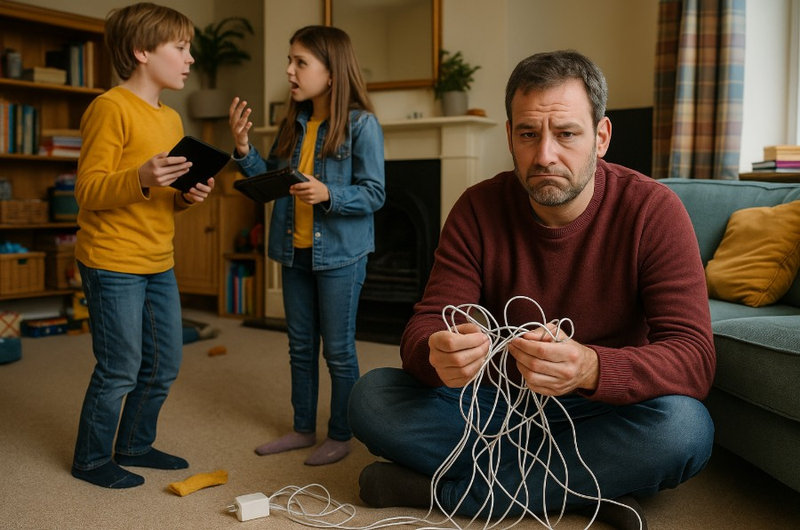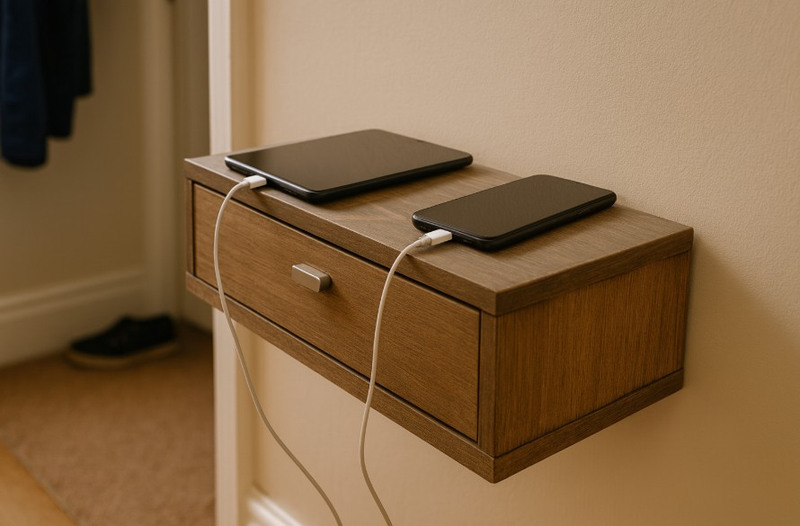I can pinpoint the moment I knew we needed a proper family charging station.
It was a Sunday evening, and everything was gearing up for that magical window where the kids were meant to be winding down. One of them suddenly remembered they had a homework task to finish on the iPad. That was dead. And the charger was nowhere to be seen. The other was mid-meltdown because their favourite audiobook had stopped halfway through, thanks to a dead battery on their phone. Meanwhile, I needed to check the bin collection schedule on my phone, only to discover it was on 2% because my wife had unplugged my charger at the wall to use the hoover and not plugged it back in again…
The kitchen counter was a mess of tangled cables and mismatched plugs, and somehow none of them seemed to fit any of the devices we actually needed. Cue the usual chorus of “Dad, where’s my charger?” and the desperate hunt for an unclaimed USB port. That was the moment I realised: we needed a proper solution. We needed a charging station.
The Problem with Plug Chaos
Let me set the scene: our house, on a typical evening, used to look like the aftermath of a very tame tech festival. Devices charging in the hallway. A tablet on the stairs. Someone’s phone plugged in behind the sofa using a power bank with exactly 3% left in it. The kitchen counter was a favourite spot—somewhere between the toaster and the fruit bowl—but that often led to the “who dripped jam on my charger” conversation.
We had arguments about who unplugged what. I lost count of how many times I heard the phrase “Has anyone seen my charging cable?” And there was always at least one child wandering the house forlornly holding a lifeless device like it was a treasured pet that just needed a boost to come back to life.
Why I Finally Got Organised

Eventually, it got to the point where the effort of dealing with scattered chargers became more stressful than just… fixing the system. So I bought a basic multi-port USB hub, cleared a small corner in the hallway, and declared it The Charging Zone.
That was it. No fancy tech. No neon signs. Just one designated spot, a few labelled cables, and a silent hope that this tiny act of organisation would stop me going slightly mad every time I needed to top up my battery.
The first week of the new charging station felt oddly satisfying. Like I’d completed a side quest in the game of parenting. Suddenly, everyone knew where their device was, where it should go when it needed juice, and—crucially—where to leave it when they were finished.
No more hunting for plugs behind furniture. No more tripping over power leads like a low-budget Indiana Jones. No more emergency dashes to the car to plug something into the USB port before a long drive.
The real surprise was how much calmer it made the household feel. Something as small as knowing your phone will be charged where you left it—and not wedged in a sofa cushion at 12%—takes one more tiny bit of stress out of the daily juggle.
What Kind of Charging Station is Best?
Without turning this into a product roundup, I will say: the best type is whatever suits your chaos. Ours is a simple USB charging hub with enough ports for the main devices (plus a couple of spares for guests or mystery gadgets I don’t even recognise anymore).
Some families might prefer a vertical docking station with slots for tablets and phones. Others might want one with built-in cable management so it doesn’t look like you’re running a phone shop from your hallway. If you’ve got teenagers, maybe one that locks? Some come with slats like a toast rack so all the devices have somewhere to go as well.
The key is that it lives in one place and everyone knows that’s the place to go. That’s where the magic happens.
If you really want to go to town you can convert a draw in a unit. The charging station can be installed at the back, and everyone plugs in then closes the drawer. Bliss.
Where to Put It

Location matters more than you’d think. We started in the kitchen, but that turned out to be too chaotic. Too many elbows, too much toast.
Eventually, we settled on the hallway table. It’s central, out of the way, and—crucially—visible. When devices are out of sight, they tend to stay forgotten and uncharged. Now, everything’s in one place, and people can just drop things off when they come in. It’s become part of the routine—like hanging up your coat, except it beeps.
Other good spots might be a utility room, the landing, or even a spot in the living room if all the pings won’t drive you mad. The goal isn’t to make it look perfect—it’s just to make it exist.
Some of them do look quite nice though. Ours is in a neat box with a lid that has holes for the wires to come out. No one needs to see the tangled mess inside. The cables don’t get dusty, and I can even put things on top of it.
One Small Fix That Changed More Than I Expected
I didn’t expect a charging station to feel like such a parenting win. But it genuinely did. It brought a little order to the mess. It reduced the number of small, avoidable arguments. It gave everyone a shared system that actually works—and I didn’t even have to shout about it.
In a world full of complex parenting solutions, it’s weirdly reassuring when something so simple just works. It didn’t cost a fortune. It didn’t take hours to set up. And unlike so many other things I’ve bought as a parent, it hasn’t ended up in a drawer, a toy box, or the back of the fridge.
So if your house is suffering from cable chaos, and you’re tired of chasing down missing chargers like a dad-shaped detective, I highly recommend setting up your own family charging station.
You might still lose the remote. But at least your phone will be charged when you go looking for it.

